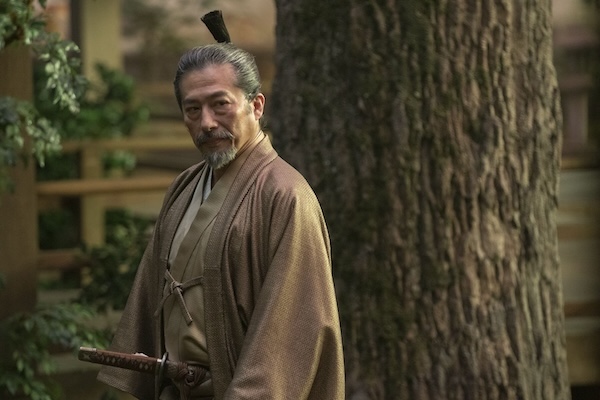
My favorite films and series have always been those that demand complete active engagement — ones necessitating full attention, critical thinking and deciphering, and anticipation, followed by reflection and introspection. These include Game of Thrones, Dune: Part One and Dune: Part Two (please hurry with Part Three!), The Matrix films, Inception, Blade Runner 2049, Mad Max: Fury Road, and so forth. As I can recall, Game of Thrones stands as one of the most mentally (and emotionally) demanding series, and it was worth it… until the seventh and eighth seasons showed up.
Recently, we’ve also been blessed with phenomenal worldbuilding series with last year’s The Last of Us, and Silo, and this year’s Fallout. From the film side, we were presented with another standout installment from the Mad Max Universe, Furiosa.
And now, we’ve been given the gift of one more to add to the worldbuilding sphere–FX’s latest miniseries-turned-series, Shōgun, which will be our sole focus for this analysis. By the way, congratulations on the series renewal! Can’t wait for season 2, although there are some massive shoes to fill.
These are works that require active mental participation, prompting us, as viewers, to lean forward in contemplation rather than get lost in mindless entertainment. These shows, rich in worldbuilding, present viewers with intricate plotlines and subplots, multifaceted characters, new terminology, and at times, narrative ambiguity.
It also provides us with important social commentary that mirrors our current predicament. The cyberpunk dystopia within Blade Runner 2049 is becoming increasingly relevant with the advent of AI. Dune has clear parallels with monotheistic religion, colonization, and capitalism, not to mention that list of terminology you have to memorize: Lisan al-Gaib, Muad’Dib, Kwisatz Haderach, etc.
Worldbuilding is a work of art, a fine balance between complexity and coherence. Too complex and too incoherent, and you’re sure to drive your audience away, which was ultimately the demise of a once-promising series like Westworld.
This is where Shōgun comes into the picture — a truly prestigious worldbuilding series that is worth the extensive analysis we are about to embark upon. Not only will we reflect upon and admire this masterpiece, but we will discuss how the complex nature of Shōgun is a perfect exercise in training your brain, from improving your memory, critical thinking, and problem-solving, to name a few.
Let the deep dive begin!
Disclaimer: Major spoilers ahead!
Read our article on simple exercises you can do to sharpen your brain!
Understanding Feudal Japan and Its Culture
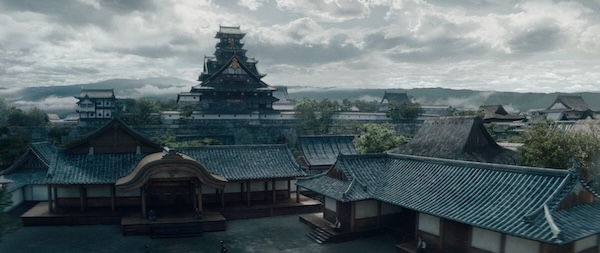
Partaking in a worldbuilding series requires heavy mental effort, and so like an infant, we must start our journey by familiarizing ourselves with the world. In Shōgun, viewers must grasp the complex societal hierarchy of feudal Japan, starting from the Taiko, followed by the Council of Regents, then daimyos, the samurai, and so on. We have to familiarize ourselves with the locations, such as Osaka, Edo, Ajiro, and Magellan’s Pass. It’s like a history course in and of itself; we are students all over again.
Understanding the intricate social customs, rules, and traditions depicted in Shōgun fosters cultural awareness and historical understanding. Customs such as when to address someone by their name followed by the suffix “sama”, what happens when a samurai offends the Council at a formal meeting, what seppuku is and when it is used, etc. We then understand the reasons why this society is governed by such strict and harsh rules: to preserve order and unity and prevent a shogunate revolt.
Engaging with the complexities of feudal Japan in Shōgun enhances memory retention and problem-solving abilities by requiring viewers to remember and navigate the intricate societal structures and cultural dynamics. From here, we begin to grasp the nuances of honor vs. shame, duty, and loyalty within this world, which encourages the audience’s ethical reasoning and moral reflection. For Western audiences, it can be baffling to see a character choosing to end their own life, albeit in an honorable way. This is an exercise in understanding a foreign culture by comparing it with the one that has shaped our worldview.
Take Yabishuge in the first episode; choosing to accept death and nearly ending his life on his own terms as it seems like the crashing waves are about to engulf him. Blackthorne shares that confusion with the audience, fearing death; for death is permanent. Whereas in their society, life and death go hand in hand; yin and yang. Exploring these notions encourages our moral reflection, critical thinking, and ethical reasoning.
Navigating Multifaceted Characters and Relationships
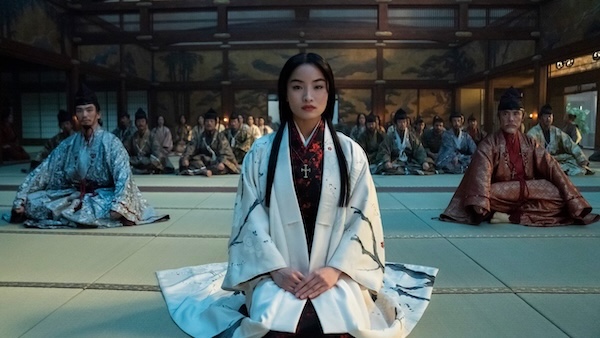
In Shōgun, we encounter a diverse cast of characters with complex relationships, alliances, and rivalries. Within the first 70-minute episode, you’re presented with an extensive briefing of the world’s political and family tree, where many of the main and supporting players are strategically introduced. Names such as Toranaga, Blackthorne, Mariko, Yabushige, Ishido, and Ochiba, to name a few.
Just like in Game of Thrones, you have to memorize a whole slew of names, while putting those names to faces through repetition. Not only that, you need to take mental notes by associating them with their correct standing and status.
At the end of the first episode, I had to read a recap and go over the names and relationships I was introduced to so that I wouldn’t be playing catch-up during the next episode. I went over it like this: for example, Toranago and Ishido are both regents, Yabushige is the lord of the Izu province and serves under Toranaga, and Omi is Yabushige’s nephew who is a lord of Ajiro, a village within the Izu province and thus serves under Yabushige.
Did you get all that?
Here’s a visual to show you how complex this is:
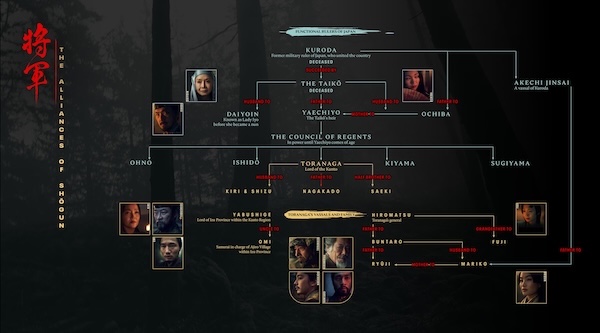
Immersing in the character relationships of Shōgun enhances cognitive functions by requiring viewers to remember and analyze complex interpersonal dynamics, fostering memory retention. This also includes tracking the evolving dynamics between characters like Blackthorne, Toranaga, and Mariko. A character like Mariko has such a rich backstory that ties her with the most powerful players in this arena, and it is up to our critical thinking and narrative comprehension abilities to understand why.
Beyond the brain benefits of these critical thinking exercises, understanding the deeper context of the story helps us build an emotional connection to the characters and the show as a whole, forging another layer of empathy and appreciation for the craft of storytelling.
Deciphering Politics, Religion, and Power Struggles
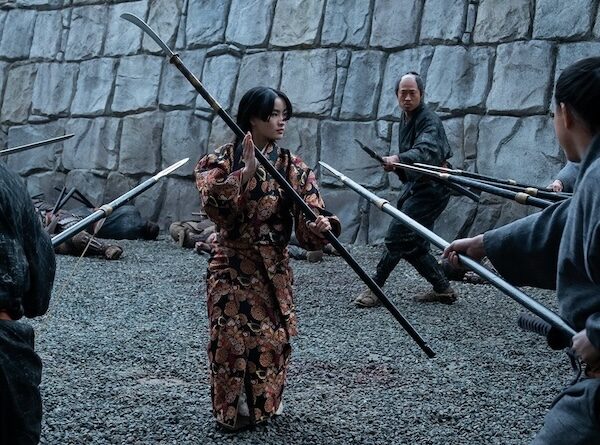
Once we have familiarized ourselves with the characters, it’s time to level up and figure out the intricate political and power struggles. We are challenged to keep track of the alliances and adversaries among characters. This is an ongoing task as we’ll find that any alliance can be fleeting, especially with characters who only serve themselves (here’s looking at you, Yabushige).
The political intrigue is where Shōgun shines. We use significant brainpower to analyze and predict complex political maneuvers and think strategically about the consequences of every move a character makes. For example, we are presented with a growing list of questions, starting from what would happen to Toranaga if he is impeached, what would happen to his army, to the Taiko’s heir, to Blackthorne, and so on.
Politics is chess, and this is an epic battle that spans ten episodes. Toranaga, while displaying humanity, has to be just as cunning, if not more, in order to survive. This means using his closest people as pawns to secure his victory. It also draws in the characters and groups outside of their political system, and this is where the Portuguese Catholics and Blackthorne come in.
It is also a puzzle as we use our predictive reasoning abilities to understand how a person’s actions fit into the grand scheme of things. If the operation known as Crimson Sky is a suicide mission, how exactly can they turn it into a victory? How will Mariko honor her family, instead of simply “joining” them through suicide? How will the Portuguese Catholics protect their lucrative trade and profits? And then we’re stuck with the mystery of just how exactly Blackthorne fits into all of this…
A fun task could be to map out the characters, factions, and alliances as you watch, making changes as you go along to help you better comprehend.
Understanding Historical Context and Connecting It to the Present
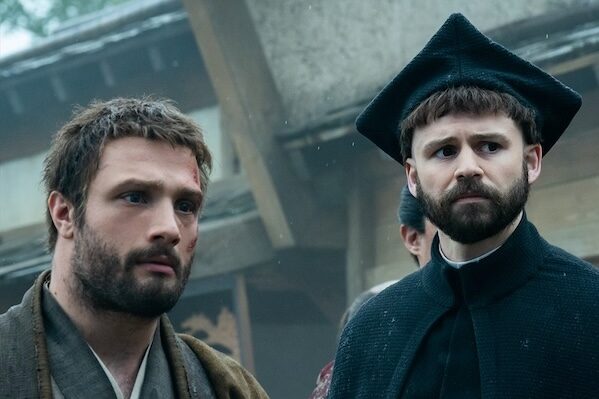
Shōgun offers insights into the historical context of feudal Japan, allowing viewers to draw parallels with contemporary societal and political issues. Tracing the differences in cultural norms and societal structures between our world and theirs promotes critical thinking and the ability to connect the dots looking backward.
As we analyze the cultural clash between the Western and Japanese characters (and the East and the West as a whole), we gain crucial cross-cultural understanding and are better able to reflect on colonialism, cultural exchange, and global interconnectedness.
One instance of cultural clash presented in the series revolves around European imperialism and its influence on Japan. We understand the Japanese’s history and relationship with the Portuguese Catholics, as well as the latter’s relationship with the European Protestants.
Enter Blackthorne and the notion that despite both being Christians, they don’t worship “the same God”. We see this today with the divide between Christianity, Islam, and Judaism. We can make clear connections and associations to the world we live in as we exit the era of peace and enter the era of potential war. Many civil and regional wars are surfacing, and there are no signs of it slowing down.
At the beginning of Shōgun, the Japanese have a frictionless trade agreement with the Portuguese Catholics. As a result of shifting alliances and potentially transitioning into a civil war, the free trade that the Portuguese were abusing and profiting from became threatened. This mirrors our global economy, where globalization was the status quo starting at the turn of the century. Now our global economy is becoming increasingly fragmented and has entered a new era comprised of nearshoring, friendshoring, and reshoring.
This transition into nationalism has led to a concerning rise in populism and the xenophobia attached to it, which is apparent in the increasingly fragile alliance between the Japanese and Portuguese in the series. Nowadays, the relationship between the East and the West has never been more divided, as the fear of foreigners and outsiders (or in Shōgun’s case, “barbarians”) has never been stronger.
Immersion in the historical context and setting of Shōgun enhances our critical thinking skills by requiring us to understand and contextualize historical events. We see the history of religion and how countless wars and crusades have occurred over time for the “rightful” proclamation of land and power. We gain an understanding that with nations and empires throughout time, there is this ongoing wave of war and peace, over and over again. We see how peace and order are fleeting, just like how democracy can be fragile and fleeting, especially during times of instability or chaos. Not to mention the undeniable fact about human nature that war is not only inevitable but perhaps a necessary evil to reclaim peace, and that we are bound to repeat history, over and over again.
Building and Memorizing Vocabulary (English and Japanese)
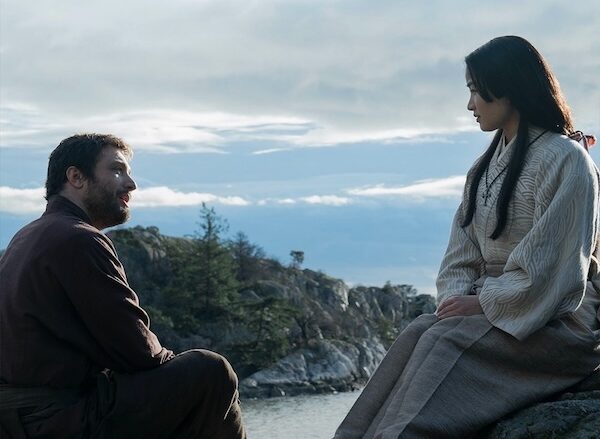
After completing those previous tasks, what you’re left with is a long list of new vocabulary, which is where our language proficiency comes to the test. Shōgun introduces viewers to a plethora of not only English terms but also Japanese ones, requiring engagement with both languages. This differs from most worldbuilding films and series spoken only in English, as Shōgun requires viewers to navigate Japanese subtitles and memorize Japanese terminology such as hatamoto, anjin, ronin, shukumei, seppuku.
Like Blackthorne throughout his journey, we are also learning and expanding our vocabulary. There are English words that we are exposed to that we rarely use in this day and age, and as such, we familiarize ourselves with their meaning and context to follow along, words like vassal, consort, and fief. Engaging with both the English and Japanese dialogue and terminology enhances our cognitive functions by promoting bilingualism and linguistic memory.
Deciphering Intricate Plotlines and Subplots
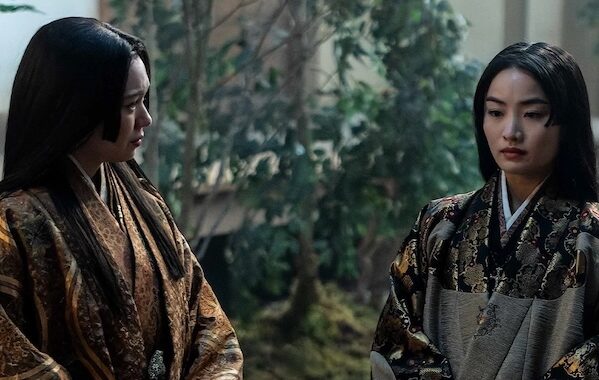
Shōgun presents viewers with a multi-layered narrative filled with intertwining plotlines and subplots. Tracking the behavior and schemes of each character sharpens analytical skills and narrative comprehension. Anyone who has watched Game of Thrones knows how important it is to keep that mental map updated.
The main storylines include wherever Toranaga is and whatever he’s doing, Blackthorne and Mariko, Ochiba and her scheming with Ishido and the council. Subplots include Yabushige’s mission to save himself, Omi and Kiku’s interactions, and Fuji mourning the loss of her husband and baby. Regardless of whether it is a major plotline or not, both are important, as everything adds up and has a ripple effect in the grand scheme of things.
Understanding the character motivations and hidden agendas driving each character’s actions in Shōgun fosters pattern recognition and deductive reasoning. Engaging with complex plotlines and subplots and piecing them all together enhances cognitive functions by requiring viewers to analyze, synthesize, and interpret narrative elements, thereby promoting critical thinking and problem-solving skills.
Interpreting Visual and Aural Cues, Symbolism, and Allegory
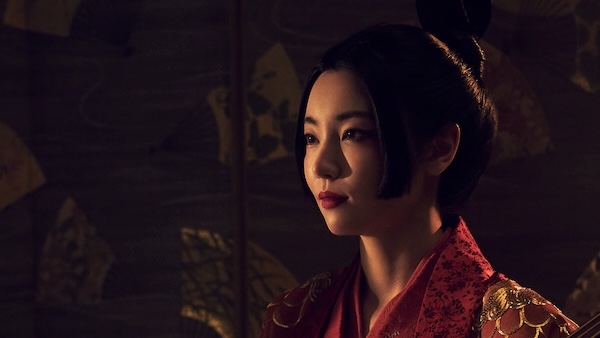
Shōgun utilizes visual and aural cues to convey narrative themes and character motivations. There are many non-verbal cues, subtle facial expressions, and fleeting glances amongst characters that require our active participation and undivided attention, for we can’t afford to miss a single shot or dialogue if we want to follow these mind games.
This makes editing a very precise and detail-oriented process. Every shot, down to the millisecond, is there for a reason. Lose your focus for a couple of seconds, and you may miss the non-verbal communication in the form of a subtle glance between Toranaga and Ochiba.
Engaging with the visual and aural elements of Shōgun enhances our ability to interpret and analyze sensory information, thereby promoting perceptual skills, thematic understanding, and emotional awareness.
There is also the added homework of interpreting every piece of translation, whether it’s Mariko translating for Blackthorne, or it’s Father Alvito. Language is a powerful and strategic tool here, used for many different reasons and to serve different purposes and for whom.
For instance, Mariko might alter her translations to prevent a situation from escalating, which is often the case for the hot-headed Blackthorne. Meanwhile, Father Alvito might alter his translations to serve the interests of the Catholic Church and its financial prosperity. Therefore, we must pay attention to what is being directly translated, what is being omitted, and what is being paraphrased.
Shōgun also employs symbolism and allegory to convey deeper thematic messages and social commentary. Symbols such as the rock garden with the neatly raked sand, the falcon, the dead bird hanging outside Blackthorne’s front door, the ritual of bathing, and tea ceremonies. Allegories such as the women of the willow world, the Eightfold Fence, Mariko’s poem about the leafless branch — all of which are crucial to the depth of the story.
Analyzing the symbolism and allegory in Shōgun enhances cognitive functions by requiring viewers to think metaphorically, interpret abstract concepts, and draw connections between narrative elements. Your mind is being trained to think outside the box, which not only helps us understand different perspectives but ultimately empathize with them as well.
Adapting to Narrative Ambiguity and Complexity
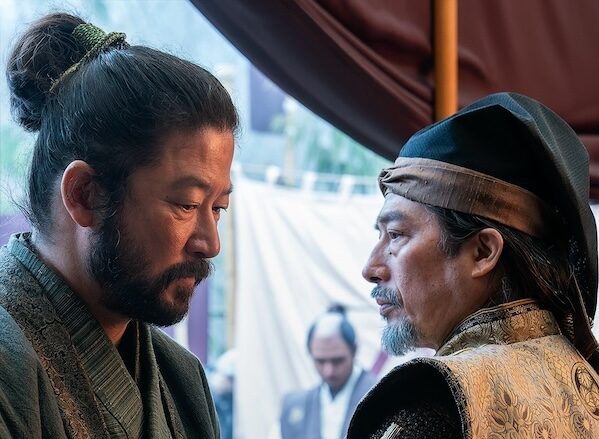
Finally, Shōgun presents us with a narrative that is rich in ambiguity and complexity, challenging us to navigate and adapt to uncertain situations, ambiguous character motivations notwithstanding.
Shōgun embodies that ambiguity through one of its most overarching quotes:
“Every man has three hearts: one in his mouth, for the world to know; one in his chest, just for his friends; and a secret heart buried deep where no one can find it. That is a heart a man must keep hidden if he wants to survive.”
As we begin to understand the concept of the secret heart, we witness the intentional inconsistencies that Toranaga displays. To win this seemingly unwinnable battle, he must throw off both his allies and enemies by saying one thing (“I don’t want to be shōgun”) and doing another (sacrificing Mariko and Hiromatsu), all for the sake of protecting his secret heart.
With Shōgun, we are left with constant ambiguity, and we experience it in full force with the final episode. At the beginning of the final episode, we see an old Blackthorne on his supposed deathbed, accompanied by his annoying, politically incorrect grandsons. Our confusion leads to a viewing anxiety of sorts because, after all, we’ve never been exposed to a flash-forward in this series, if this is indeed a flash-forward. As we progress along the finale, we are provided with one indicator after another that eventually helps us piece the puzzle together (or so we hope).
It is not a fault of our own to confuse confusion with mystery. Shōgun’s intention is not to confuse us, but to guide us in embracing mystery (re: the secret heart). One instance of this is when Hiromatsu commits seppuku in front of Toranaga. Was this a premeditated sacrifice between them or not? If it wasn’t, was Toranaga going to let his confidant end his life like that?
Finally, we end this marvelous journey with one final act of ambiguity. What did that silent exchange between Blackthorne and Toranaga mean at the end? What were they able to communicate so effectively through that one glance alone? Does Blackthorne ever leave Japan, as he was so determined to do so throughout this series? Or is his destiny tied to his newfound home, as Toranaga had already determined?
Audiences often have trouble dealing with ambiguity, for it is in our nature to need a definitive answer. However, the beauty of ambiguity is that it leads to endless discourse, keeping the story alive. After all, would Inception have been as impactful if we had known definitively whether or not the totem stopped spinning?
Shōgun manages to leave a final parting gift where it completely subverts the expectations of the archetypal white savior narrative, which deserves a lengthy standing ovation. The bright side is that some of these questions may be answered through season 2. As for the ones with no answers, it is ultimately up to us to resolve that discomfort through critical thinking and reflecting, using the clues and indicators, symbols, and motifs at our disposal. That is the homework Shōgun has handed to us, and it has truly been a rewarding journey.

